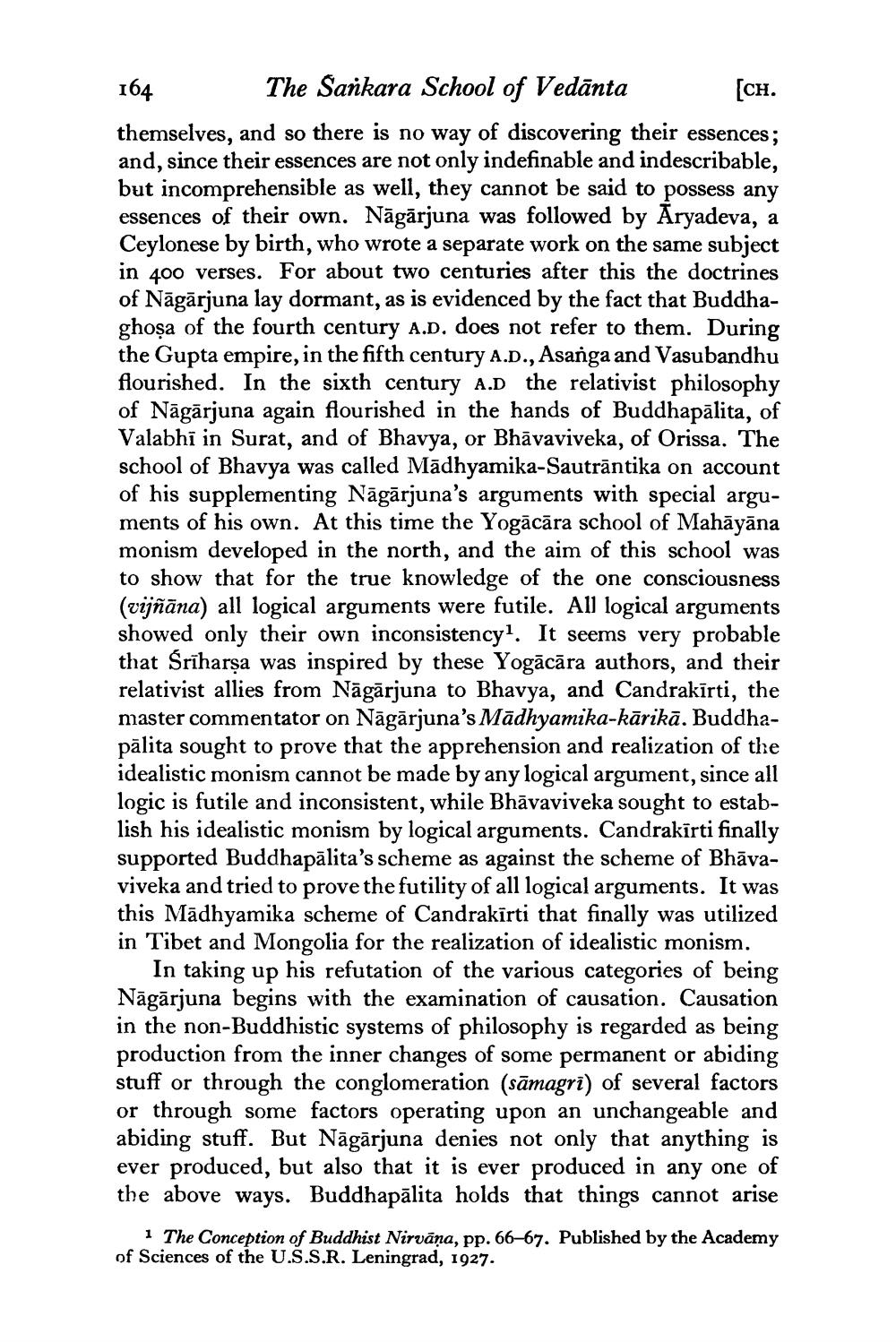________________
164
The Sankara School of Vedānta (CH. themselves, and so there is no way of discovering their essences; and, since their essences are not only indefinable and indescribable, but incomprehensible as well, they cannot be said to possess any essences of their own. Nāgārjuna was followed by Aryadeva, a Ceylonese by birth, who wrote a separate work on the same subject in 400 verses. For about two centuries after this the doctrines of Nāgārjuna lay dormant, as is evidenced by the fact that Buddhaghoṣa of the fourth century A.D. does not refer to them. During the Gupta empire, in the fifth century A.D., Asanga and Vasubandhu flourished. In the sixth century A.D the relativist philosophy of Nāgārjuna again flourished in the hands of Buddhapalita, of Valabhī in Surat, and of Bhavya, or Bhāvaviveka, of Orissa. The school of Bhavya was called Mādhyamika-Sautrāntika on account of his supplementing Nāgārjuna's arguments with special arguments of his own. At this time the Yogācāra school of Mahāyāna monism developed in the north, and the aim of this school was to show that for the true knowledge of the one consciousness (vijñāna) all logical arguments were futile. All logical arguments showed only their own inconsistencyl. It seems very probable that Śrīharșa was inspired by these Yogācāra authors, and their relativist allies from Nāgārjuna to Bhavya, and Candrakīrti, the master commentator on Nāgārjuna's Mādhyamika-kārikā. Buddhapālita sought to prove that the apprehension and realization of the idealistic monism cannot be made by any logical argument, since all logic is futile and inconsistent, while Bhāvaviveka sought to establish his idealistic monism by logical arguments. Candrakīrti finally supported Buddhapālita's scheme as against the scheme of Bhāvaviveka and tried to prove the futility of all logical arguments. It was this Mādhyamika scheme of Candrakīrti that finally was utilized in Tibet and Mongolia for the realization of idealistic monism.
In taking up his refutation of the various categories of being Nāgārjuna begins with the examination of causation. Causation in the non-Buddhistic systems of philosophy is regarded as being production from the inner changes of some permanent or abiding stuff or through the conglomeration (sāmagri) of several factors or through some factors operating upon an unchangeable and abiding stuff. But Nāgārjuna denies not only that anything is ever produced, but also that it is ever produced in any one of the above ways. Buddhapālita holds that things cannot arise
1 The Conception of Buddhist Nirvāṇa, pp. 66-67. Published by the Academy of Sciences of the U.S.S.R. Leningrad, 1927




